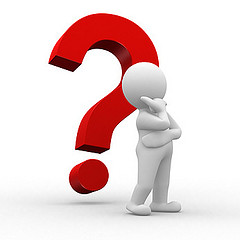 How many times have you heard a speaker, moderator, or meeting leader say “that’s a great question” in response to some of the questions posed by someone in the audience or a team member in a staff meeting? If you had asked an earlier question that did not elicit that reaction, did you notice what thought raced through your mind when you heard it? If you did notice, it might have sounded something like “so what am I, chopped liver?”
Although I hear it quite regularly, I have no idea why people say “that’s a great question." More than likely it is an instant, automatic, and unexamined space filler response that gives the speaker time to gather his or her response, kind of like a pause button. The problem is it pushes a judgment back on all members of the audience. and directs the audience’s attention back to the questioner, at least briefly. For the person to whom the response was directed it is an acknowledgment. To everyone else it will occur as a put down. It invites comparisons and other unproductive internal dialogue.
How many times have you heard a speaker, moderator, or meeting leader say “that’s a great question” in response to some of the questions posed by someone in the audience or a team member in a staff meeting? If you had asked an earlier question that did not elicit that reaction, did you notice what thought raced through your mind when you heard it? If you did notice, it might have sounded something like “so what am I, chopped liver?”
Although I hear it quite regularly, I have no idea why people say “that’s a great question." More than likely it is an instant, automatic, and unexamined space filler response that gives the speaker time to gather his or her response, kind of like a pause button. The problem is it pushes a judgment back on all members of the audience. and directs the audience’s attention back to the questioner, at least briefly. For the person to whom the response was directed it is an acknowledgment. To everyone else it will occur as a put down. It invites comparisons and other unproductive internal dialogue.
In our work we focus on productive interactions and are highly sensitized to conversations that create connection and call forth creativity and collaboration. Naturally, that also sensitizes us to conversations that at best don’t create openings, and at worst crush possibility.
If you don’t have the habit of using the "great question" phrase, hurray! If you do have it, examine what drives your habit if you can. Invent a new approach that keeps you as the responsible party at that point in the dialogue while still giving yourself a pause to gather your thoughts, and practice it until you can trust yourself not to fall back in the heat of the moment. So what might you substitute?
In some cases simply don’t say anything for a few seconds. Silence can show the audience that you are actually considering the question more deeply. On the phone where your audience can’t see your reflective expression, offer something like “let me think about t (or reflect on) that for a moment before I answer.” Again, it communicates thoughtfulness and respect on your part and keeps you with ownership of the conversation. It tells the audience that you connected and are considering the question, rather than merely spouting a pre-set message. Your approach will actually build mutual trust and safety.
Take some time to self observe how you deal with answering questions and how you can demonstrate your respect for each and every person’s contributions. Watch the openness grow and the creativity flow.
photo credit: WingedWolf via photopin cc
